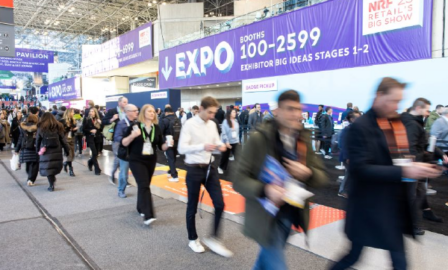2022 Retail Trends
Read our updated trends report here: 2023 Retail Industry Trends
The retail industry has weathered a wild storm over the past two years, having navigated the COVID-19 pandemic, supply chain challenges, and an ever-evolving consumer. As we take in the holiday data from 2021, it looks that the industry has had a solid finish to the year, with holiday spending up 8.5 percent and both in-store and online channels seeing a rise from pre-pandemic levels. Retailers continue to show resiliency and flexibility to adjust and meet their consumer’s shifting needs, but as we look into 2022, what are the top challenges and trends that we should expect to face?
2022 Retail Trends #1: Continued Evolution of Unified (or Hybrid) Retail
For the last decade, retailers have grown in their omnichannel presence – the ability to meet and transact with their customers across multiple channels and platforms. As we move into 2022, having this omnichannel framework in place has essentially become table stakes. Retailers need to have a consistent customer experience across their various channels – and many have done that (or at least attempted it) and have even tied the channels together with some experiences such as buy online, pickup in store (BOPIS). While many have surpassed this, it’s important to call out that retailers without a strong omni foundation should be starting here and putting in place the groundwork to allow them to meet their customer where they are, whether in-store or online.
Download the Full 2022 Retail Trends Report Here
The next step in this journey is to truly embrace that these channels need to work together in a single unified experience. The numbers continue to rise on consumers leveraging their mobile device to research a product or compliment a shopping experience, both prior to and while in the store, with recent numbers showing up to 80 percent of shoppers exhibiting this behavior. Whether via mobile-native site or app, retailers should be embracing this unified approach and empowering their shoppers with information at their fingertips that supports their in-store journey. Home Depot, for example, gives detailed inventory and product location data so that a shopper knows if their product is in stock, and can walk to the exact spot in the store where their product can be found.
While shoppers have returned to stores after the initial COVID-19 surge of 2020, there is still some uncertainty due to recent outbreaks. Outside of common safety measures (masking, social distancing), leveraging technology to create more efficient visits to stores will help to entice shoppers to still make those visits and not solely rely on eCommerce. Multi-channel shoppers spend more than single-channel shoppers, and whether that is due to the ability to make impulse buys in-store, influence from store associates, or just the ability to tangibly browse the products in front of them, it’s up to the retailer to capitalize. Appointment-based shopping will continue to rise and should be enabled through a retailer’s online and mobile channels, and can serve as a great bridge into their loyalty programs as well. Lululemon is a great example of a retailer who offers appointment booking online so that a shopper can have personal shopping services, get product demos, or even trade in their used clothes.
Download the Full 2022 Retail Trends Report Here
Lastly, with a focus on unified commerce, retailers should be evaluating their store footprint and determining what the right mix is going forward. Large chains such as Target and Macy’s have experimented with small format stores to reach new guests in urban areas. Individual brands are partnering with large stores for shop in shop concepts, such as Sephora opening 850 mini-stores in Kohl’s by 2023 and home gym company Tonal partnering with Nordstrom to expand its retail footprint across 40 stores in the US. These concepts will continue to grow in prominence as they offer symbiotic benefits to both retailer and brand and allow for consumers to have more curated experiences when they shop in person.
2022 Retail Trends #2: The Rise of the Conscious Consumer
Conscious consumerism has been on the rise and is by no means a new thing. This practice, which we will define as “buying practices driven by a commitment to making purchasing decisions that have a positive social, economic, and environmental impact,” has been growing as younger generations demand more socially and environmentally responsible brands. It’s only being accelerated even faster by recent activism movements and natural disasters in recent years. Some statistics that retailers should care about … continue reading by downloading the full trends report below.
Download the Full 2022 Retail Trends Report Here



